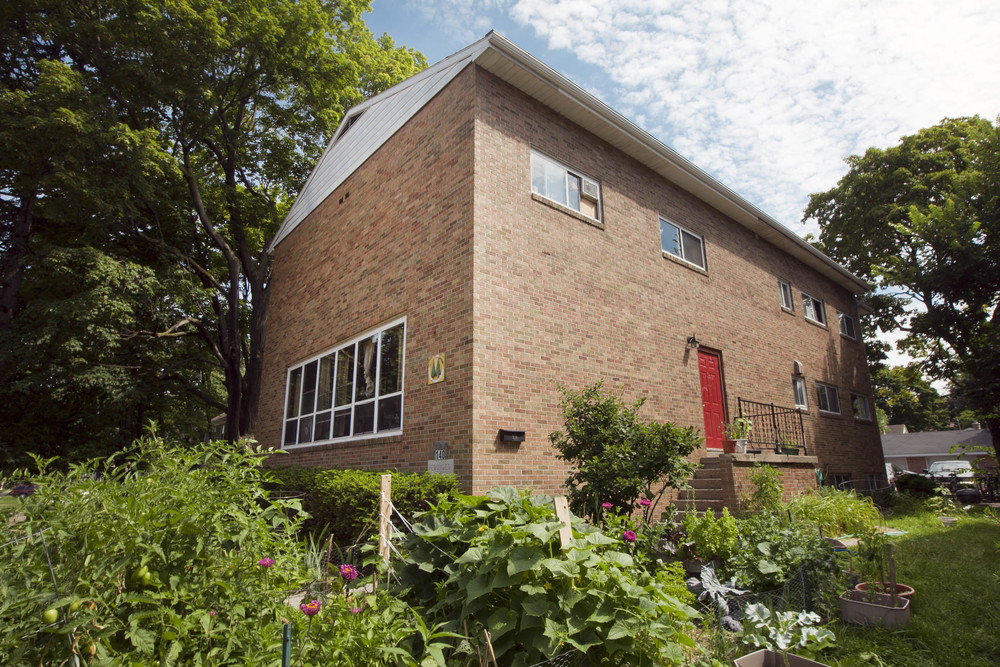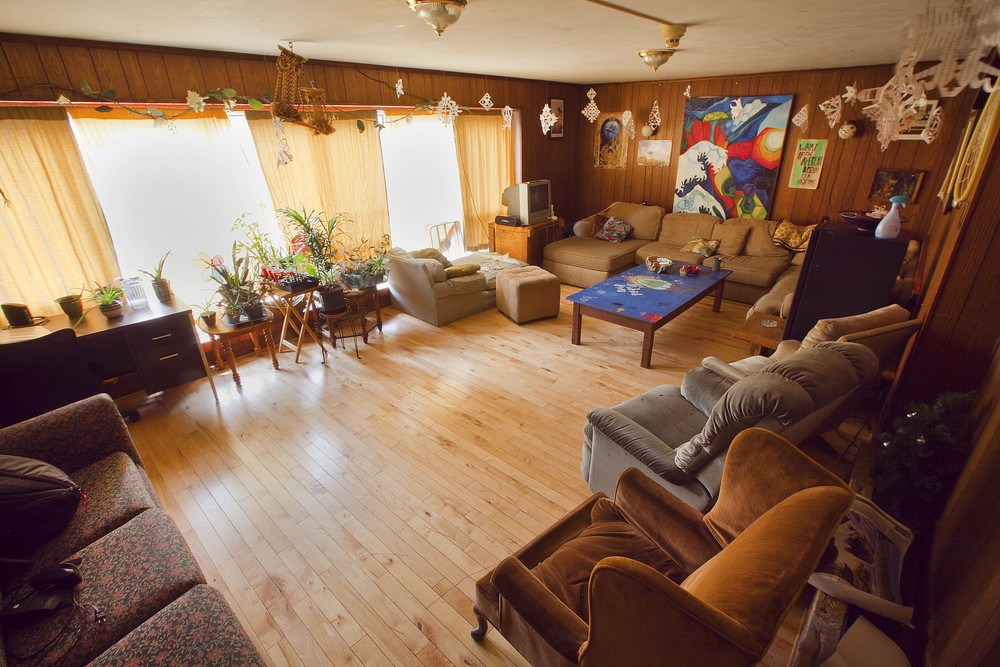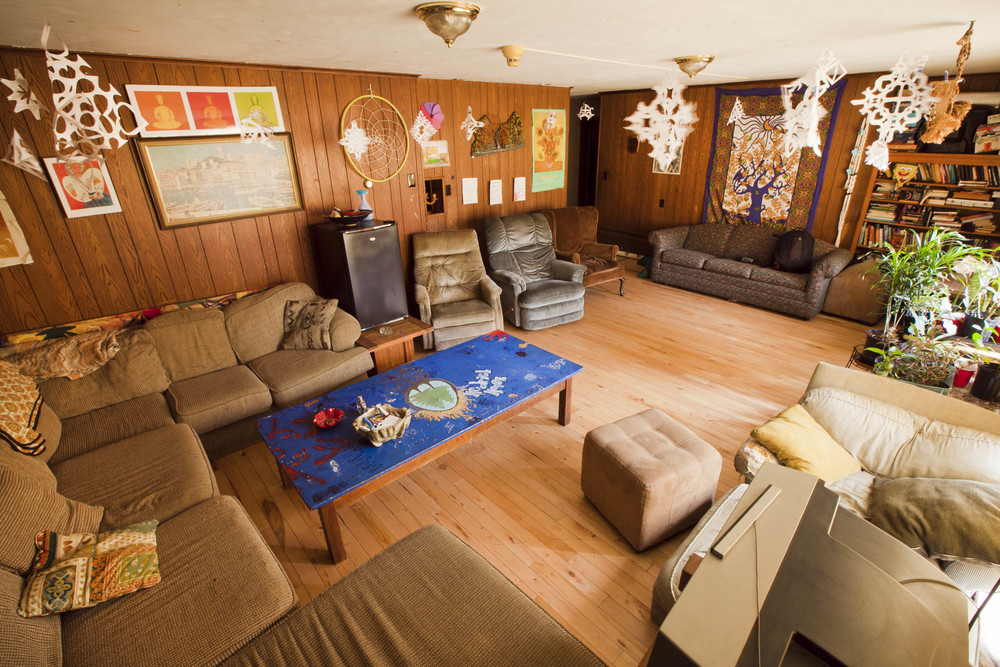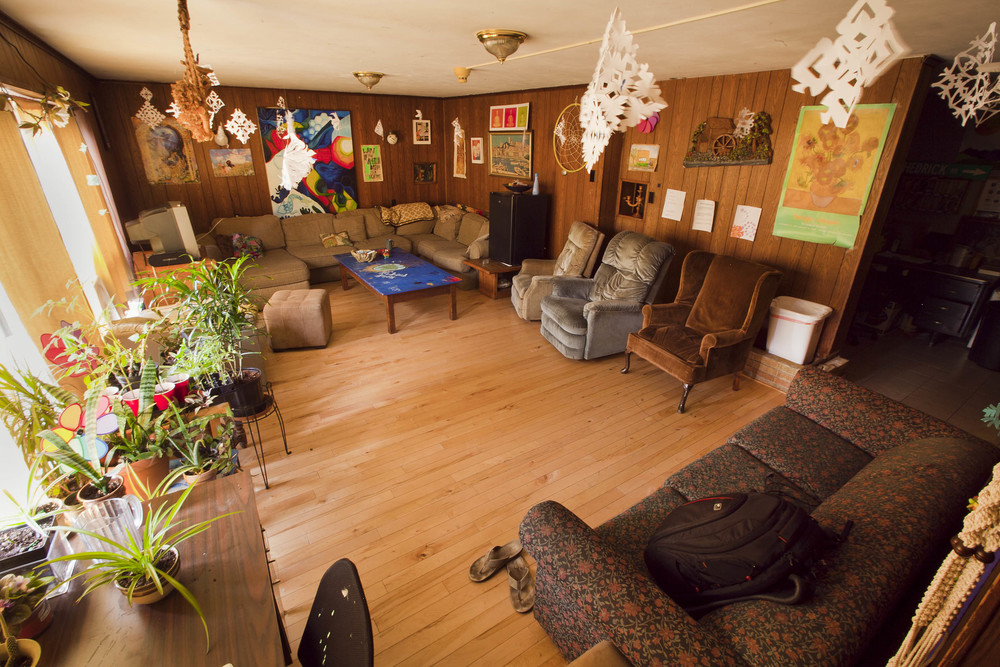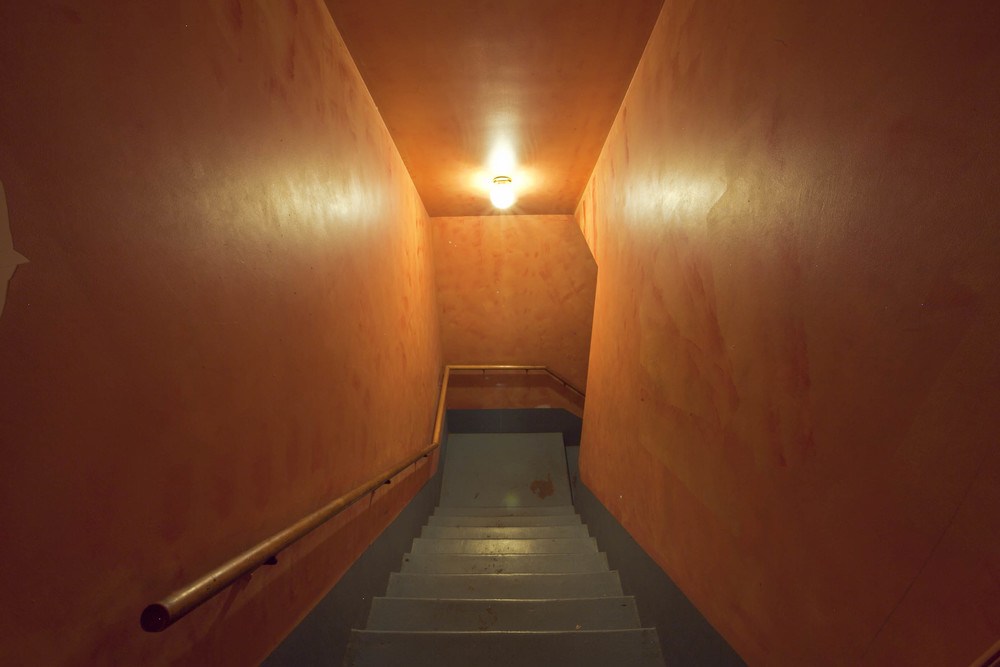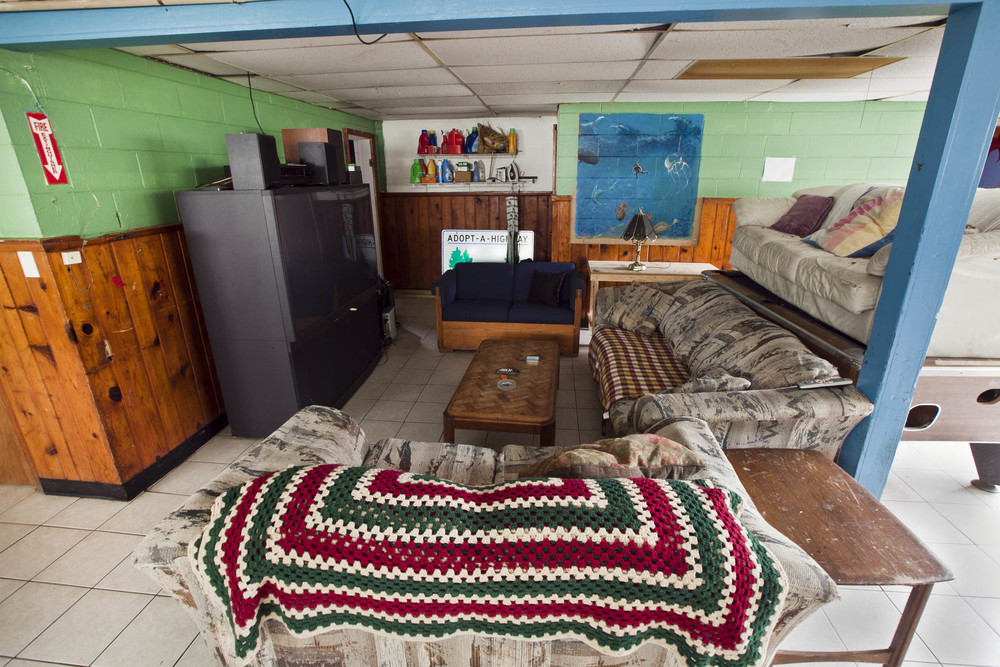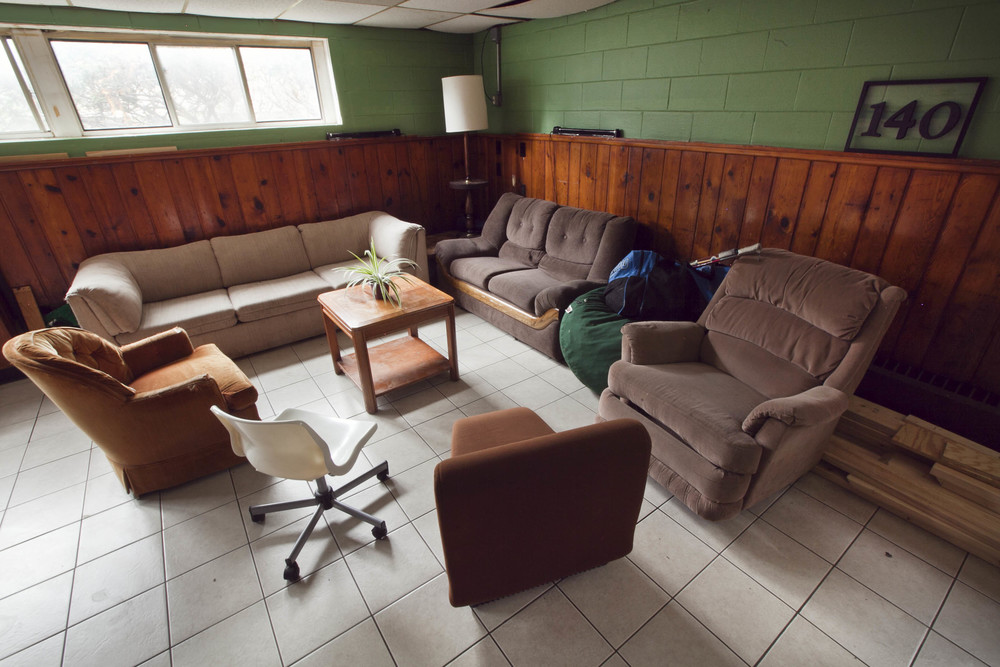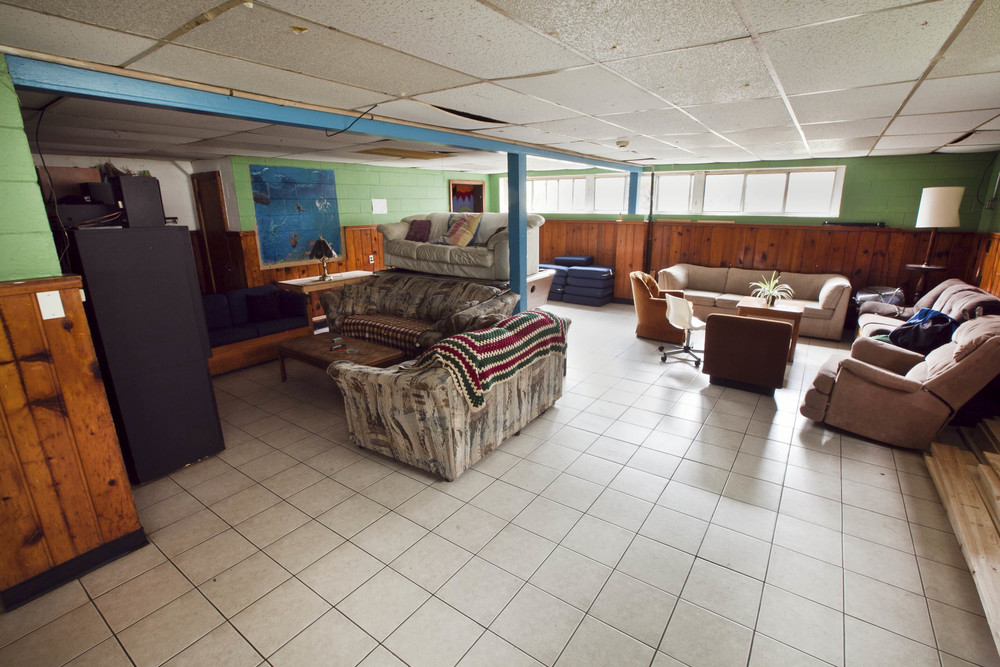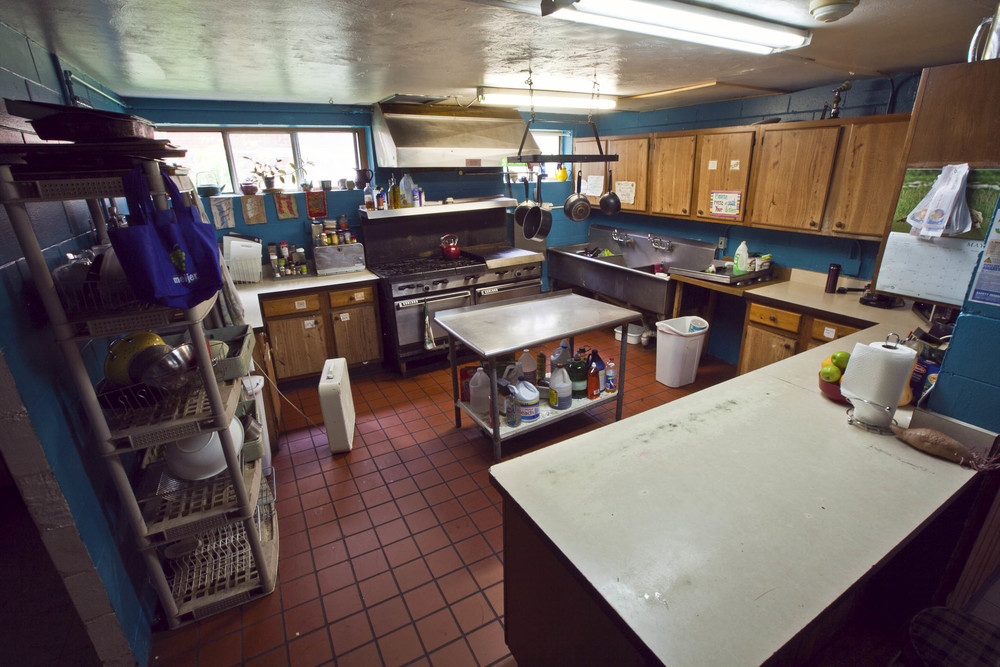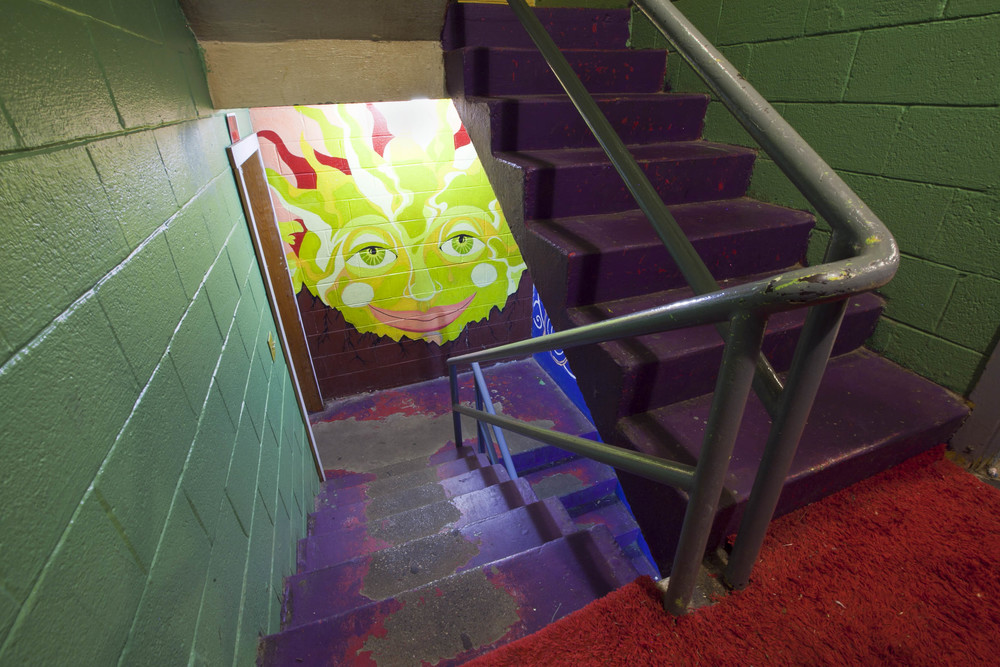Hedrick
Members: 15 (15 singles)
Approx. cost: $608/mo
Floors: 3
Bathrooms: 3
Mealplan: Not currently
Refrigerators: 3
Laundry: 1 washer, 1 dryer
Common Areas: Large dining area, living (plant) room, basement den.
Highlights: Plant room
Bus Line: #1 CATA line
Nearby Locations: Mason/Abbot Halls, Student Services Building, The Peanut Barrel (bar), MSUFCU (credit union)
Blocks from campus: 1
Hedrick is a nice, spacious co op with fifteen single rooms and thirteen parking spaces. The house features a cozy living room called the Plant Room which is a great place to study and get work done. There is also another living room area with a TV and lots of couches. There is a garden outside that provides plants like tomatoes, zucchinis, and herbs in the summer and fall. The house is pretty eco friendly and has been described by members as a very relaxed house that is more on the quiet side but with many socializing opportunities.
Interested? Apply to the SHC first by clicking here. Then contact Kylie, the Membership Officer, at kcamman@yahoo.com
Hedrick Gallery
History
Established in 1939 at 405 Abbot Road, Hedrick is the oldest student Cooperative in East Lansing. It was named after Wilbur O. Hedrick, a professor at Michigan State College and pioneer of East Lansing Co-ops.
In 1954, Hedrick burned down while the Spartans were playing in the Rose Bowl. Later, a new house was built by June 1956 at 140 Collingwood. The “Hedrick Empire” eventually extended to 146 Collingwood (now Ferency), and 152 Collingwood (now Miles).
Members of Hedrick were instrumental in establishing new student Co-ops in East Lansing, and were among the first to support the establishment of the Student Housing Corporation in 1969. Hedrick is the oldest student owned cooperative in the country.
The first student housing cooperative in the United States to own its own building was Hedrick Cooperative at what was then Michigan State College in East Lansing, Michigan. In 1939, male students with sponsorship from the Independent Men’s League (IML), YMCA, and the Agriculture Council of MSC, established a housing co-op at 405 Abbott Street in East Lansing. Other student cooperatives were in existence at this time, though none owned their houses. In fact, this co-op was modeled after similar institutions at the University of Michigan (read Two-Dollar House).
Membership was open to any male student who matched their requirements for “good character, willingness to cooperate with other members, and a scholastic average of 1.0 or better” (Hedrick Scrapbook, page 1). Each member paid a $10 deposit and a $10 loan to the house, which was refunded when the house became self-sustaining, in addition to room and board charges of $5.50 per week.
Dr. Orion Ulrey, a cooperative specialist at the College, assisted members in planning, and their plans for the house were approved by Dean Fred. T. Mitchell. Just before Christmas 1939, the men acquired, remodeled and bought furniture for their house, performing all work themselves. Equipment and furnishings were approved by the home economics department of MSC, and were bought with members’ funds.
Intended to cost about one third less than other housing options available to students at the time, the co-op required members to perform housekeeping, cooking, maintenance and organization. Each resident had specific household duties ranging from “potato peeling or running a vacuum cleaner to keeping books” (Hedrick scrapbook, page 2).A typical dinner menu from the time included “pork chops, potatoes, tomato and lettuce salad, gingerbread, milk and coffee” (Hedrick scrapbook, page 2).
The co-op was named in honor of Wilbur O. Hedrick who was among the first people ever to teach a college course in the cooperative principles. A graduate of MSC in 1891, Hedrick was a professor at the college for over 53 years, though he became semi-retired in 1934. he was first an assistant professor of history and political economy (1893). He also taught economics, American constitutional history, English history, civil government, and logic, psychology, ethics. He was a popular professor. Always interested in furthering the cooperative movement, Hedrick published two bulletins on a regular basis: one on Michigan Cooperative Grain Elevators, and another on Michigan Cooperative Creameries. Additionally, he was a founder of the Campus Bookstore.
Though the co-op was not part of the College, a strong link was maintained through a 12 member faculty advisory board.
The formal dedication of the house was on Sunday, January 28, 1940, with Mr. and Mrs. Hedrick present as honored guests. A banquet was held at noon, and an open house lasted from three to six p.m.
Founding members are as follows:
- Name and Position
- Ron Jackson house manager
- Donald Goss secretary
- Bernie Oosting treasurer
- Robert Johnson purchasing agent
- Al Penfold cook
- Norman Crout steward
- Bill Anderson
- Leland Bradley
- Jerry Centilla
- Bruce Crowe
- Bob Fulford
- Al Kurts
- Jacob Lusch
- Al Menzer
- Wallace Muczinski
- Herb Pifer
In 1941 moved from 405 Abbott Street to another house at 903 East Grand River (across from Mason and Abbott halls). This move enable the membership to increase from 16 to 24 co-opers. The number of boarders also increased.
This new house was financed on a long-term basis, but the capital necessary for the down payment and new furniture was raised by loans from individual members. The house president for the first session in the new house was Don Goss, a business administration senior.
Hedrick Co-op saw its first wedding ceremony in 1947 when co-op member Thomas Karpovich married Marilyn Buhl in a ceremony in the living room. The service was officiated by the Reverend M.E. McCullough of the Peoples Church, and the attendants included Mrs. Elton Peigols, wife of an honorary house member, and Don J. Stogebar from Dearborn, a friend of the groom’s from the Army. Guests and house residents were served refreshments after the ceremony, and Wesley Davey sang “I Love You Truly” and “The Lord’s Prayer” to the newlyweds.
In 1949, Hedrick celebrated its Tenth Anniversary with a big birthday celebration and dance on October 22. Members celebrated a successful battle against housemothers, which were going to be required by college administrators [See Housemother Project]. The Spartans played Penn State in football, and co-opers followed the game with a meeting of the Premier Student Housing Corporation. The next Sunday a large dinner was held and folks attended a “folk-sing” afterward.
House members during the Fall 1949 session included:
- Name Year Position
- Lou Buffham Senior
- Ed Chamberlain Senior
- Carl Christensen Senior Secretary – President of ICC
- Walt Chun Senior
- Rudy Culik Graduate Educational Chair
- Harold Day Senior
- Bill Espie Senior Treasurer
- Jim Fazio Junior
- Lyman Freimans Junior
- Wayne Geyer Sophomore Membership Chair
- Don Ho Junior
- Art Jarvis Senior House Manager
- Lee Jolgren Junior
- Bill Kennedy Junior Public Relations Officer
- John Lenosky Freshman
- Ed Lord Sophomore
- Rusty McIntosh Sophomore
- John Nara Junior Social Chair
- Glenn Peterson Graduate
- Jim Pollard Junior
- Gerald Smith Senior
- Bob Smith Graduate
- Joe Sweeney Senior Corresponding Secretary
- Russ Weaver Senior
- Gil Whitney Senior Purchasing Agent
- Dick Woelfle Junior
- Harold Wong
- Paul Worthington Junior
- Ray Yeutter Senior
Catastrophe struck on January 1, 1954, while the Spartans were playing the Rose Bowl, Hedrick Co-op burned [cool photos in Hedrick scrapbook]. The cause was attributed to be an over-heated furnace. All 26 members were left homeless and many lost all of their personal possessions (including a veterinary student from Jamaica who lost all of his reference books and microscope). The College community responded quickly, however. The Christian Student Foundation held a benefit drive, other co-ops volunteered to feed members of Hedrick, and the YMCA opened their kitchens to them for lunch. Some of them ate at the College House. The East Lansing Merchants Association arranged for discounts at area stores. The co-opers lived in Quonset huts on campus set up to handle the large number of students returning from World War II.
By January 27, members of Hedrick bought and moved into another house at 335 East Grand River. The house, former home of the Delta Tau Delta fraternity, had eight rooms on each of two upper floors, and living, dining, study and kitchen spaces on the ground floor. Some of the members at this time included:
- Name Year Hometown Position
- Jim Ostler Senior Saginaw
- Al Alexander Junior Akron, Ohio
- Bert Osen Junior Saint Clare Shores
- John Cook Sophomore Oak Hill, West Virginia Secretary
By June 1956, the members of Hedrick were constructing a new house at 140 Haslett. This new co-op will house 25 people and opened for the fall 1956 session. Members will spend 5 hours per week on House Duty. At this time, Hedrick was one of seven men’s cooperative houses.
By the late 1960s, Hedrick’s goals included establishing a newspaper to keep alumni informed of current house events, increasing newspaper and magazine subscriptions, maintain an average house grade point average of 2.5 or better. Hedrick offered spacious recreation areas and free snacks, and held the Intramural All-Sports Trophy.
From the history report of James Canup, history intern.

